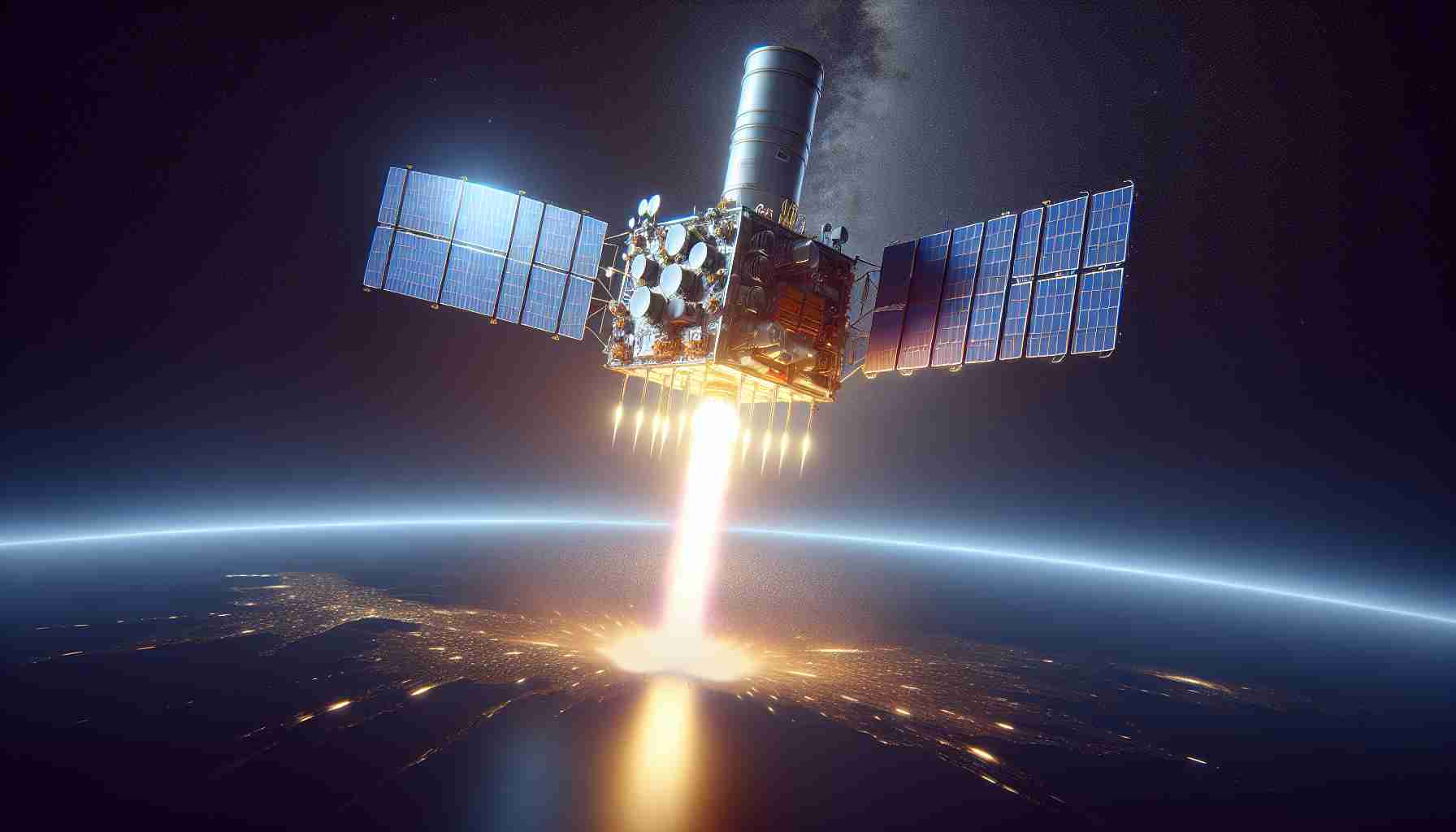
A successful SpaceX Falcon 9 rocket launch occurred recently, delivering a significant payload of 20 satellites for Eutelsat, a leading global satellite operator. This mission represents a pivotal step for Eutelsat following its merger with OneWeb, which took place in September 2022.
The launch took place at dawn from Vandenberg Space Force Base in California, marking a new chapter in Eutelsat’s operations. These newly deployed satellites are set to enhance the company’s already extensive communications network, which consists of over 600 low Earth orbit satellites facilitating services for broadcasters, telecoms, and other sectors.
Eutelsat’s CEO has highlighted that this launch is significant as it is the inaugural mission since the merger and is indicative of the company’s future expansion plans. With aspirations to integrate seamlessly into the existing telecommunications framework, the company recognizes the unique position of satellites within the larger connectivity ecosystem, which is predominantly led by terrestrial telecom providers.
The newly merged entity is poised to deepen its engagements with a variety of telecom partners, including prominent players in the industry. With an impressive order backlog valued at $4 billion, Eutelsat is particularly targeting growth in emerging markets like India and Saudi Arabia, where the demand for satellite communication is expected to surge in the coming years.
Additionally, Eutelsat is venturing into the aviation sector, intending to develop in-flight connectivity solutions that will enhance passenger experience significantly. The CEO anticipates that revenues will begin to grow substantially starting next year.
Eutelsat’s New Horizons: Satellite Launch Paves the Way for Future Growth
In a transformative move for global telecommunications, Eutelsat’s recent satellite launch serves as a keystone for the company’s forward-looking strategy. The deployment of 20 satellites marks not only a significant logistical success but also a vital component of Eutelsat’s vision for the future of satellite communications post-merger with OneWeb.
Key Questions and Answers:
1. What does this launch mean for Eutelsat’s operational capabilities?
The launch enhances Eutelsat’s ability to provide reliable and high-speed internet access to underserved regions, significantly improving connectivity in locations that have historically relied on sporadic or low-quality services.
2. How does this relate to the competitive dynamics in the satellite industry?
The satellite sector is seeing increased competition from both traditional operators and emerging technologies, such as satellite constellations by companies like SpaceX’s Starlink. Eutelsat’s strategy aims to leverage its established infrastructure and partnerships to maintain a competitive edge.
3. What are the primary markets targeted for expansion?
Eutelsat is focusing on expanding its footprint in emerging markets such as Africa, Latin America, and parts of Asia. High demand for internet connectivity in these regions, coupled with limited terrestrial infrastructure, presents a promising opportunity for growth.
4. What regulatory challenges might Eutelsat face?
As satellite operations expand, Eutelsat must navigate complex international regulations concerning spectrum use, space debris management, and coexisting with other satellite networks, necessitating ongoing collaboration with global regulatory bodies.
Challenges and Controversies:
Despite its promising trajectory, Eutelsat faces challenges including the sustainability of satellite launches and the environmental impacts associated with rocket launches. Concerns regarding space debris and the necessity for responsible orbital management are becoming increasingly critical as satellite networks proliferate.
In addition, the transition from traditional satellite services to next-generation broadband solutions poses a challenge; Eutelsat must ensure that its network can efficiently handle higher data demands while remaining cost-competitive against terrestrial providers.
Advantages and Disadvantages:
Advantages:
– Improved Global Connectivity: Eutelsat’s expanded network will significantly improve internet access, especially in regions lacking infrastructure.
– Diverse Service Offerings: The ability to cater to different sectors, including aviation and maritime, positions Eutelsat favorably in multiple lucrative markets.
– Established Partnerships: The merger with OneWeb creates synergies that enable Eutelsat to strengthen relationships with key telecommunications players.
Disadvantages:
– High Operational Costs: Satellite launches and operations involve substantial investments, and any delays or failures could considerably impact financial performance.
– Competition: The growing number of satellite constellations introduces additional competitive pressures, which may challenge Eutelsat’s market share and pricing strategies.
– Regulatory Hurdles: Compliance with international regulations can complicate expansion and operations, possibly leading to delays or increased costs.
As Eutelsat moves forward with its satellite deployment, it stands at a critical junction that could redefine its role in global communications. For more information on Eutelsat and its initiatives, visit eutelsat.com.



